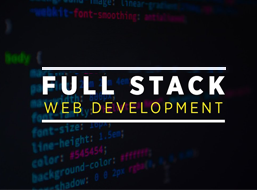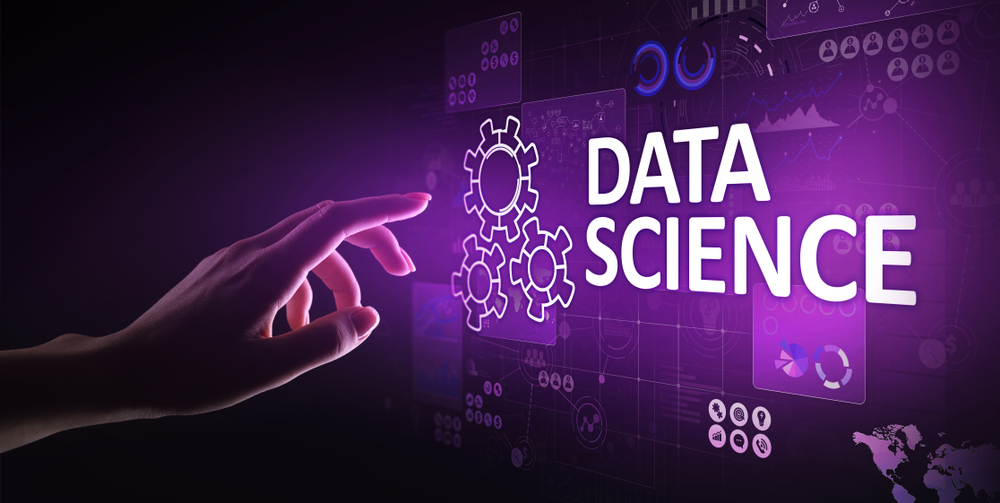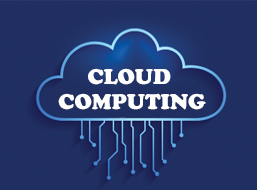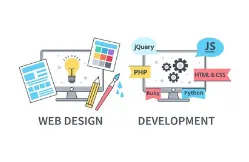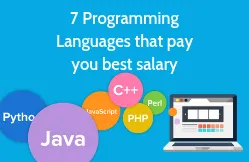Python Programming
WHAT IS PYTHON? Python is an object-oriented, high-level, interpreted programming language with dynamic semantics. Its high-level dynamic linking and dynamic typing combined with integrated data structure, make it very attractive for the rapid growth and development of applications, as well as for use as a scripting or paste language to connect existing components.
Python's simple and easy-to-learn syntax emphasizes readability and, therefore, reduces the cost of program maintenance. Python supports packages and modules, which encourages the reuse of code and modularity of the program. The wide standard library and the Python interpreter can be freely distributed and are available in binary or source format free of charge for all major platforms.
Often, because of the increased productivity it provides, programmers fall in love with Python. As there is no compilation step, the altering test-troubleshooting cycle is fantastically quick. Debugging Python programs is easy: an error or incorrect entry will never cause a segmentation error. On the other hand, when the interpreter discovers an error, it generates an exception. When the program does not catch the exception, the interpreter prints a stack trace. A source-level debugger allows the inspection of local and global variables, the evaluation of arbitrary expressions, the establishment of breakpoints, traversing the code one line at a time, and so on. The debugger is written in Python, which demonstrates the introspective power of Python. On the other hand, often the fastest way to debug a program is to add some print declarations to the source. The fast editing-test-debug cycle makes this simple approach very effective.
WHAT ARE THE APPLICATIONS OF PYTHON?
Python is used in many application domains. Here is a sample.
Thousands of third-party modules for Python are listed in the Python Package Index .
Web and Internet development Python offers many options for web development: Software testing becomes a high demand in market.
Frameworks like Django and Pyramid.
Micro-frameworks such as Bottle and Bottle.
Advanced content management systems such as Plone and django CMS.
Many Internet protocols are supported by the standard Python library: HTML and XML
JSON
Email processing
Support for FTP, IMAP and other Internet protocols.
Easy-to-use socket interface
And the package index has even more libraries: Requests, a powerful HTTP client library.
BeautifulSoup, an HTML parser that can handle all kinds of strange HTML.
Feedparser to analyze RSS / Atom feeds.
Paramiko, implementing the SSH2 protocol.
Twisted Python, a structure for programming offbeat systems.
Numerical And Scientific
Python is widely used in numerical and scientific computing:
SciPy is a gathering of bundles for arithmetic, science and building.
Pandas is a data analysis and modeling library.
IPython is an intense intuitive shell that presents simple altering and recording of a work session and backings representations and parallel registering.
The Carpentry Software course shows essential abilities for logical figuring, running training camps and giving open access to educating materials.
Education
Python is a brilliant dialect for showing programming, both at the early on level and in further developed courses.
Books such as How to Think Like a Computer, Python Programming: Introduction to Computer Science and Practical Programming.
The Special Education Interest Group is a decent place to examine instructing points.
Desktop GUI The Tk GUI library is included with most of the Python binary distributions.
Some toolboxs that can be utilized on different stages are accessible independently: wxWidgets
Kivy, to write multitouch applications.
Qt via pyqt or PySide
Platform-specific toolkits are also available:
GTK +
Microsoft Foundation classes through the win32 extensions
Software development Python is frequently utilized as a help dialect for programming designers, for control and organization of accumulation, testing and in numerous different ways. SCons for compilation control.
Apache Gump and Buildbot for aggregation and ceaseless programmed test.
Roundup or Trac for bug tracking and project management.
Business applications Python is also used to create ERP and e-commerce systems: Odoo is an across the board administration programming that offers a scope of business applications that shape a total arrangement of business administration applications.
Tryton is a platform for high level applications and three general levels.
WHAT IS THE AVERAGE COURSE FEES OF PYTHON?
The fees for a Python course depends upon from where an individual is taking up the course. If someone wishes to study this course, different sites offer different prices. Certification courses are expensive than the training courses. There are some other factors also that influence the course fees. For example, who is the instructor, the site is renowned or not, or is the site trusted by companies or not. Both online and offline courses are available on Python. Even some Universities have also started teaching this course with their Computer Science subject. The cost of online courses roughly ranges between Rs. 1000- Rs. 30,000 while the offline course may cost up to around Rs. 50,000- Rs. 60,000 depending on the vastness and quality of course
WHAT IS THE SCOPE AND JOB OPPORTUNITIES OF PYTHON PROGRAMMING?
Opportunities are humongous in this field as Python is one of the fastest programming languages growing these days and is in a great demand.
- Software Engineer
- Python Developer
- Research Analyst
- Data Analyst
- Data Scientist
- Software Developer
It is very great that 41 substantial associations on the planet have embraced Python as their essential programming dialect in a little traverse of time. A portion of the enormous players like Quora, Facebook, YouTube, SlideShare, Dropbox, Pinterest, Reddit, and Netflix have a large portion of their new code written in Python. It is an open mystery in the designer world that Google has now received Python as its optional coding dialect, and has focused on utilizing it more in its new item contributions.
The fame of Python writing computer programs is relentlessly rising as are Python vocation openings.
According to the TIOBE Programming Community archive, which tracks the ubiquity of programming dialects, Python has skipped four places in the most recent last year only to rank at number 4 on the list after Java, C and C ++!
Python is widely used for data mining, analysis and really any kind of big data tasks that require a high-level language like Python. Apart from big data and data mining, Python is literally used for everything. Django is a web framework written in Python, slightly similar to Ruby on Rails. Python is used as a scripting language and for object-oriented applications. Some of the areas that Python is used a lot are financial institutes and brokerage firms to analyze large amounts of data on ETF and other financial resources, web development as mentioned above and any type of programming task that requires a high-level language like Python. At this time there are more jobs in Python related to software development instead of web development. Django is not as popular as ROR, but Python is more popular than Ruby.
In no other field of use, Python has been received as fast and energetically as in the sciences. The plan of dialect supplements the reasoning of researchers. Python does not drive them to think like PC researchers, but rather it enables them to define logical undertakings rapidly and proficiently as automatic calculations in Python. Libraries for complex scientific and measurable computations, for the perception of information in 2D and 3D, and for particular specialized purposes, prepare researchers of all orders with intense instruments to accomplish their targets all the more rapidly.
WHY COMPANIES PREFER PYTHON?
Python has topped the graphs in the ongoing years over other programming dialects like C, C++ and Java and is generally utilized by the software engineers. The dialect has experienced an extraordinary change since its discharge 25 years back the same number of extra highlights are presented. The Python 1.0 had the module arrangement of Modula-3 and cooperated with Amoeba Operating System with differed working apparatuses. Python 2.0 presented in the year 2000 had highlights of trash specialist and Unicode Support. Python 3.0 presented in the year 2008 had a helpful outline that dodges copy modules and develops. With the additional highlights, now the organizations are utilizing Python 3.5.
The product improvement organizations incline toward Python dialect in light of its flexible highlights and less programming codes. Almost 14% of the software engineers utilize it on the working frameworks like UNIX, Linux, Windows and Mac OS. The designers of immense associations use Python as it has made a stamp for itself in the item headway with trademark features like- Interactive
Interpreted
Modular
Dynamic
Object-oriented
Portable
High level
Extensible in C++ & C
WHAT ARE THE ADVANTAGES OR BENEFITS OF PYTHON?
The Python dialect has an expanded application in programming advancement organizations, for example, diversions, casings and web applications, dialect improvement, prototyping, visual depiction applications, and so on. This provides the language with a greater plethora of other programming languages used in the industry. Some of its advantages are- Extensive support libraries It provides large standard libraries that include areas such as string operations, the Internet, web services tools, operating system interfaces and protocols. Most of the highly used programming tasks already have a script that limits the length of the codes that will be written in Python.
Integration Feature
Python incorporates the mix of business applications that encourages the advancement of web benefits by summoning COM or COBRA parts. It has powerful control capabilities, as it calls directly through C, C ++ or Java through Python . Python likewise forms XML and other markup dialects, since it can keep running on all cutting edge working frameworks through a similar byte code.
Improved Programmer Productivity
The dialect has broad help libraries and clean protest arranged plans that expansion the profitability of the software engineer from two to ten times while utilizing dialects, for example, Java , VB, Perl, C, C ++ and C #.
Productivity With its powerful procedure incorporation includes, the unit testing system and upgraded control abilities add to expanding speed for most applications and application profitability. It is an excellent option to create scalable multiprotocol network applications.
In this way, we can presume that Python is a powerful programming dialect and gives simple utilization of the lines of code, upkeep can be dealt with in a fantastic way and troubleshooting can likewise be completed effortlessly. It has gained importance around the world, since the computer giant Google has made it one of its official programming languages.
WHAT ARE THE CONTENTS OF THIS COURSE?
1. Introduction to Python
2. Different Modes in PYTHON
3. PYTHON NEW IDEs
4. Variables in Python
5. String Handling
6. Python Operators and Operands
7. Python Conditional Statements
8. Python LOOPS
9. Learning Python Strings
10. Sequence or Collections in PYTHON
11. Python Lists
12. Python TUPLE
13. Python Sets
14. Python Dictionary
15. Python Functions
16. Advanced Python
17. Python Modules
18. Packages in Python
19. Python Date and Time
20. File Handling
21. Python OS Module
22. Python Exception Handling
23. More Advanced PYTHON
24. Python Class and Objects
25. Python Regular Expressions
WHAT IS THE SYLLABUS OF THIS COURSE?
1: Introduction To Python Installation and Working with Python Understanding Python variables Python basic Operators Understanding python blocks
2: Python Data Types Declaring and using Numeric data types: int, float, complex Utilizing string information compose and string activities Characterizing rundown and rundown cutting Use of Tuple information write
3: Python Program Flow Control Conditional blocks using if, else and else if Simple for loops in python For loop using ranges, string, list and dictionaries Use of while loops in python Circle control utilizing pass, proceed with, break and else Programming utilizing Python restrictive and circles square
4: Python Functions, Modules And Packages Organizing python codes using functions Organizing python projects into modules Importing own module as well as external modules Understanding Packages Powerful Lamda function in python Programming using functions, modules and external packages
5: Python String, List And Dictionary Manipulations Building blocks of python programs Understanding string in build methods List manipulation using in build methods Dictionary manipulation Programming using string, list and dictionary in build functions
6: Python File Operation Reading config files in python Writing log files in python Understanding read functions, Understanding write functions, Using seek to manipulate file pointer Programming using file operations
7: Python Object Oriented Programming – Oops Concept of class, object and instances Constructor, class attributes and destructors Use of class in projects Operator overloading, Inheritance and overlapping Adding and collecting attributes of classes Programming using Oops logic
8: Python Regular Expression Powerful pattern matching and searching Power of pattern searching using regex in python Real time parsing of networking or system data using regex Password, email, url validation using regular expression Pattern finding programs using regular expression
9: Python Exception Handling Avoiding code break using exception handling Safe guarding file operation using exception handling Handling and helping developer with error code Programming using Exception handling
10: Python Database Interaction SQL Database connection using python Creating and searching tables config information on database and reading it. Programming using database connections
11: Python Multithreading Understanding threads Forking threads Synchronizing the threads Programming using multithreading
12: Contacting User Through Emails Using Python Installing smtp python module Sending email.
13: Python CGI Introduction on how to write python program for applications on CGI. Creating menus and accessing files Server client program.
Most Popular Course
Data Science || Web designing & development || Full Stack Developer || Graphic Design || Java || Python Programming
